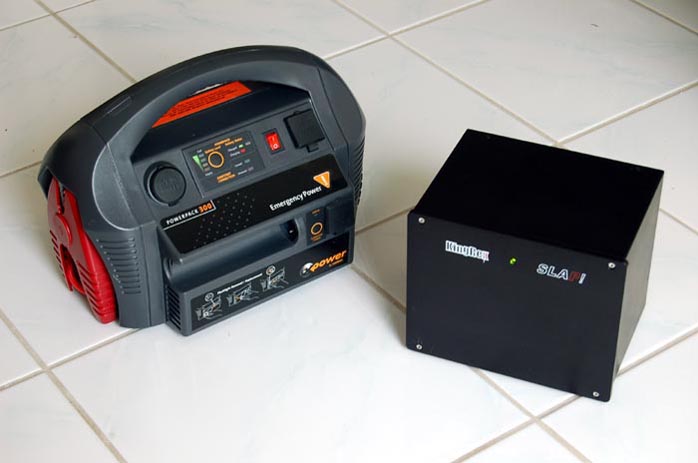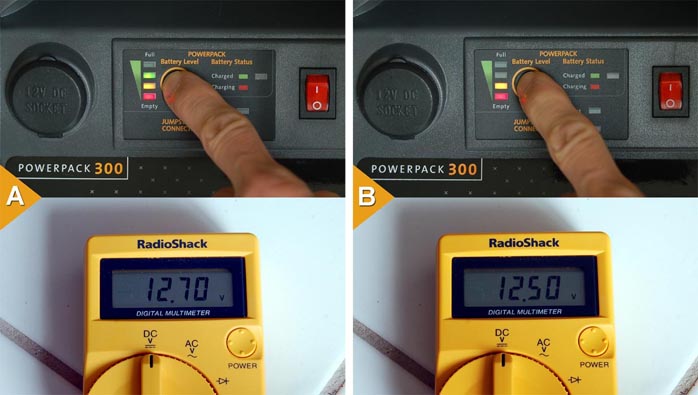|
This review page is supported in part by the sponsors whose ad banners are displayed below
|
|||||||||||||||
 |
|||||||||||||||
I had no idea that bigger 'disappointments' were awaiting for me in Schwab's Piano Music for Christmas. Who on earth would think it'd need high current to play "O Little Town of Bethlehem" or "Away in a Manger"? The improvisational playing style of this beautiful CD, as I recalled, was simply mesmerizing. It contained very few notes but lots of feelings that calmed the nerves. Sure it did. "O Little Town of Bethlehem" was surely peaceful and quiet; and so was "We Three Kings" - but only in the beginning. When the passionate built-up swirled into full swing, I had to call on the 105A reserve of SLAP. Even more so with the pulsating jazz rhythm and macro dynamics of "Jehovah, Allelujah". The close-miking and high SPL recording that must have frequently sent the UV meters into the red was pushing the PSU into ripple waves. |
|||||||||||||||
 |
|||||||||||||||
|
| |||||||||||||||
The more affordable alternatives One other battery PSU specially catering to 12V operative Tripath amps is the $235 AudioMagus PowerCenter which has been launched slightly ahead of the KingRex SLAP. The PowerCenter is about half the size and half the price of SLAP, with the charge button and PSU button conveniently located on the front panel. (Note: When I communicated with KingRex on this issue, their design team had been very persistent about the back panel location for power on/off switch on all their products for better sonic performance and more efficient noise control: "We definitely don't want AC to run through the chassis, do we?" For the PowerCenter, a stranded 18 AWG OFC silver plated power cable comes as standard accessory. The built-in charger also employs a three-stage process to optimize charge capacity and battery life. The SLA battery inside is the Universal UB1280, which happens to have the same physical dimension as the YUASA NP7-12 but is rated marginally higher at 12V 8AH. I did not have one for assessment but was lucky enough to have one reader willing to share his experience with us: The PowerCenter is good value for money and takes his T20U to the next level. However, it does not feature a low-battery warning nor low voltage cut-off and users must therefore manually keep an eye on that or recharge more often. I was also told that it has neither AC fuse nor DC fuses, which could be a safety concern. |
|||||||||||||||
 |
|||||||||||||||
If you are not that steadfast about audio-dedicated battery power, then there are many battery power packs that could be used to power a 12V Tripath amp. I have two Xantrex XPower Powerpack 300EPs serving me well since I reviewed the Trends TA-10. A few pointers have led me to believe that this could be a serious contender: The SLA battery inside the Xantrex 300EP is rated at 12V/14AH, double that of the SLAP. My actual experience is that it seems to have inexhaustible capacitance. I had them fully charged only once and then used them through Trends and Winsome Labs reviews (the latter on the AC inverters). I recharged them again before I left them idling over the bitter winter and after 6 months they still read 12.70V on my voltmeter (photo A). Recently, without any recharge I used them to operate electric lawn trimmers (again on AC inverters, for 10 to 15 minutes each) until the power level indicators were down to two LEDs (red and yellow, the two green ones wouldn't light up) and, yet to my surprise, the voltage still measure a strong 12.50V, which was good enough to power the T20 (photo B). I then recharged them (for the second time in 18 months) to 14V in 24 hours, to get ready for A/B audition. 2. The Xantrex has an audible alarm mechanism to detect overheating and low battery (11V), plus automatic cut-off at 10.5V. 3. It can jump-start a 6-cylinder engine, just imagine how much instantaneous maximum power it can deliver. 4. Price is about $80 only! (You need to buy a DC power cord with cigarette lighter adapter though.) |
|||||||||||||||
 |
|||||||||||||||
The only downside, from an audiophile point of view, is that the Xantrex is not designed for audio application. It has a built-in 120V AC inverter circuit and jumper cables attached, and apparently no RFI/EMI filtering or noise suppressing device of any sort. Not to mention that it is big, ugly and a totally misfit on the audio rack. The SLA battery is not user-replaceable but for that price, who'd complain? What we really care about is whether there would be any audible difference. Could the Xantrex be the sonic jump starter for the budget-minded value seeker? At first, my feeling was hey, a battery is a battery. Generally speaking, what you expect from an battery-powered amp is there. At times, I almost had to say that the Xantrex was just as 'powerful' as the SLAP until the real sudden burst of energy in Orff's Catulli Carmina set them apart. The SLAP had the upper hand of lightning speed to project an instinctive resilience to bounce back climax after climax. It made the amp sound almost like a muscle amp with super-high damping factor. The Xantrex was not as rock solid and sounded slightly disoriented during the transient burst. I emailed Xantrex with lots of questions but didn't get any response. Understandably, they don't have an obligation to address weird queries outside their field of expertise. The only possible explanation I could find in their User's Guide was that the DC power outlet could sustain a maximum continuous load of "12A with automatic reset (of the circuit breaker)". I supposed that means the Xantrex could go over the nominal 3 A but not beyond 12 A. Aside from capability (or the lack of it) to handle high current demand, the Xantrex seemed to be lacking the harmonic richness and textural suaveness of the SLAP. This was particularly noticeable on instruments like harp and the piano (Mozart's Sonatas) where a translucent, pearly touch would have added so much; and perhaps to a lesser extent, the flute, clarinet and coloratura soprano (Bellini, Rossini and of course that demanding aria "The Vengeance of Hell" from the Queen of the Night by Mozart). Bass was reasonably well defined but definitely not as deep. Then I compared the Xantrex with the PSU to cross-check. One thing it surely did well (and almost comparable to SLAP) was opening up the soundstage with localization of musical instruments and three-dimensional layering. |
|||||||||||||||
 |
|||||||||||||||
The final vote I left the audition room with pages of notes and started writing in the next few days. As the hour for casting the final vote drew near, I received the final installment of Paul Lewis' complete cycle of Beethoven Piano Sonatas Vol. 3 & 4 [Harmonia Mundi HMC901906.08/HMC901909.11]. This is something I have been anxiously waiting for. I went back to the room and loaded the CDs. The next few days were a pure musical treat. Sorry, the SLAP review had to wait. This is the most complete Beethoven cycle in every respect. I couldn't have asked for more musically or sonically. At the end of my retreat, I realized that I had been listening to the bi-amp T20Us powered by PSUs yet didn't miss anything. There is a higher power than battery power: the power of music. To SLAP or not to SLAP? It all boils down to what you care about most, music or sound. Of course most people would say they are all part and parcel and no reviewer would or should try to separate them. But the reality is, when we're in a recital or a concert seated in a less sonically perfect spot, we still enjoy the music if we let the power of music overcome that minor sonic adversity. So why can't we enjoy the T20 as is, which in its own right is a Blue Moon Award recipient? Indeed, I'm telling you there's no need to go for SLAP if you're already enjoying your music with your T20/T20U or Trends TA-10. You are a true music lover. Absolute sound is just too easy a red herring you spot. Yet for the others, the Holy Grail seeking audiophiles, it's human nature that when one spends so little on these wonderful amps, one feels the itch to spend a little more just dreaming that one small miracle could lead to a bigger one. Then I would say to SLAP and there's no rub. With all the carefully thought-out power supply and noise-filtering topography, smart charge circuitry and safety/protection mechanism, it is the best there is. And the manufacturer surely deserves a big SLAP on the back. As I've hinted at before, a single amp with a single SLAP is good, bi-amping with two PSU is better; bi-amping and bi(tch)SLAP(ing) is... well, what can I say? |
|||||||||||||||
|
Quality of packing: Double box with thick foam cradle. |
|||||||||||||||
|
| |||||||||||||||
 |
|||||||||||||||
 |
|||||||||||||||
|
KingRex website
|
|||||||||||||||
 |
|||||||||||||||